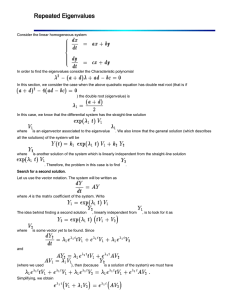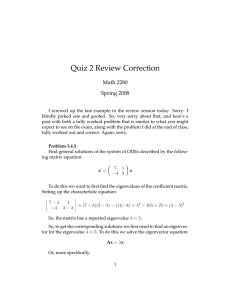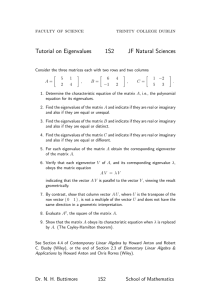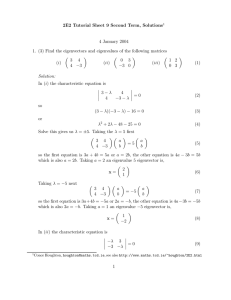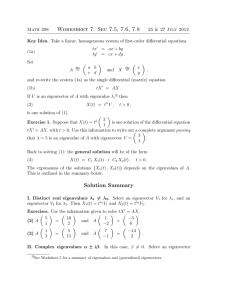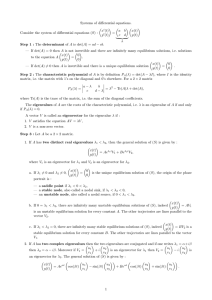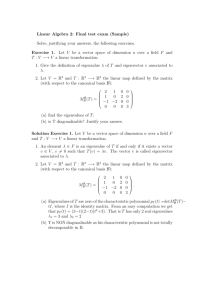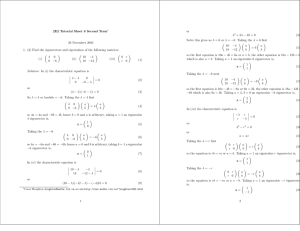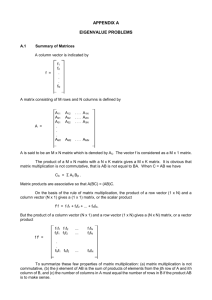Systems with Zero as an Eigenvalue
advertisement
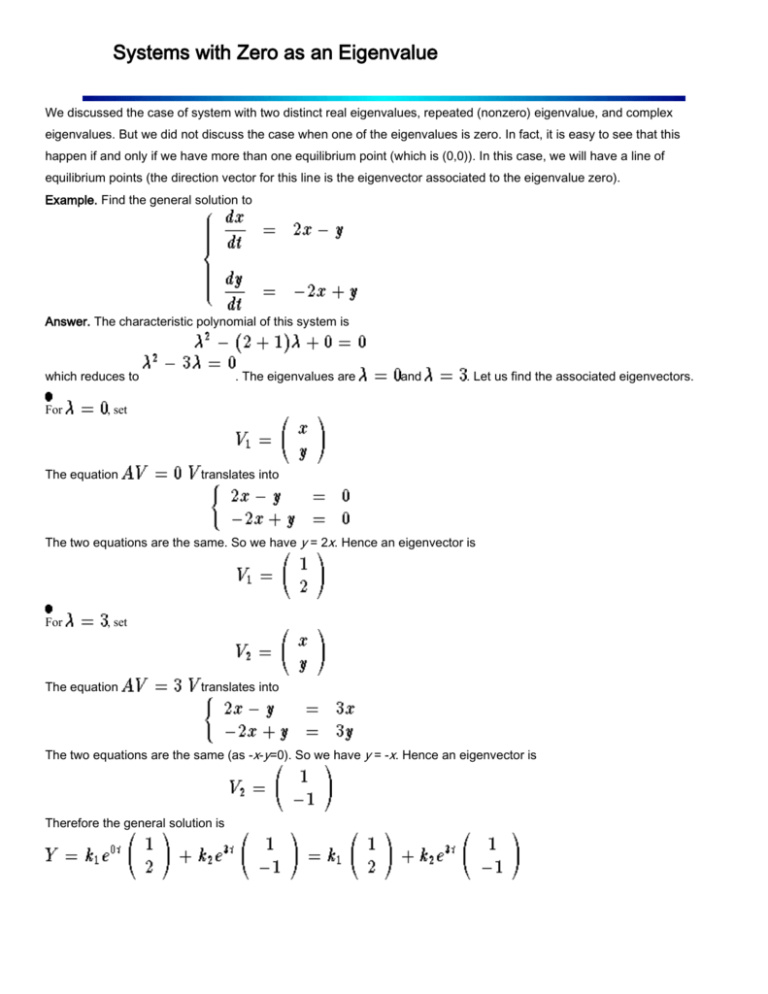
Systems with Zero as an Eigenvalue We discussed the case of system with two distinct real eigenvalues, repeated (nonzero) eigenvalue, and complex eigenvalues. But we did not discuss the case when one of the eigenvalues is zero. In fact, it is easy to see that this happen if and only if we have more than one equilibrium point (which is (0,0)). In this case, we will have a line of equilibrium points (the direction vector for this line is the eigenvector associated to the eigenvalue zero). Example. Find the general solution to Answer. The characteristic polynomial of this system is which reduces to For . The eigenvalues are and . Let us find the associated eigenvectors. , set The equation translates into The two equations are the same. So we have y = 2x. Hence an eigenvector is For , set The equation translates into The two equations are the same (as -x-y=0). So we have y = -x. Hence an eigenvector is Therefore the general solution is Note that all the solutions are line parallel to the vector infinity. But when passing by (0,0) and having . When , the trajectory converge to the equilibrium point on the line of equilibrium points (that is as a direction vector). The picture below explains more what is happening. The general case is very similar to this example. Indeed, assume that a system has 0 and if is an eigenvector associated to 0 and We have two cases, whether If , then , the trajectory goes to or as eigenvalues. Hence an eigenvector associated to , then the general solution is . is an equilibrium point. If , then the solution is a line parallel to the vector . Moreover, we have when if , the solution tends away from the line of equilibrium; if , the solution tends to the equilibrium point along a line parallel to .

